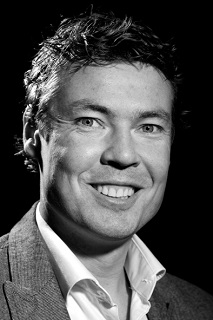In spite of sharing a similar legal framework, Member states of the European Union assess asylum requests differently. That conclusion is reached in the report How (un)restrictive are we? ‘Adjusted’ and ‘expected’ asylum recognition rates in Europe, written by IMISCOE sociologist dr. Arjen Leerkes, affiliated with Erasmus University Rotterdam and the Research and Documentation Centre (WODC). In response to the study, and in the context of its EU presidency, the Netherlands has taken the initiative to obtain more harmonisation in Europe.
There are large differences in the percentage of asylum requests that Member states recognise. Of all first instance decisions on asylum requests taken in the EU in the first three quarters of 2015, 47% were recognitions. However, that percentage varied from 91% in Bulgaria down to 7% in Latvia. Such rates cannot be compared easily because the composition of the asylum seeker population differs per country, applied statistical methods to help improve their comparability. The study was carried out by the WODC, which is part of the Dutch Ministry of Security and Justice.
Adjusted and expected recognition rates
Both adjusted and expected recognition rates were calculated for the study. The adjusted recognition rate gives the percentage of positive decisions by each Member state, had all Member states received exactly the same asylum seeker population in terms of country of origin, age, and sex. The expected recognition rate gives the expected percentage of positive decisions in a Member state, if its decision outcomes would be in line with the decision outcomes for such asylum seekers (in terms of nationality, sex and age) in the European Union as a whole.
Large differences remain
It turns out that the differences in recognition rates become smaller, when the rates are adjusted for international differences in the composition of asylum seeker populations regarding nationality, sex and age. At the same time, large international differences persist. When it comes to the chances of international protection, it is found that the Member states with the highest (adjusted) recognition rates still recognize approximately twice as many asylum requests as Member states with the lowest (adjusted) recognition rates. Recognitions on international grounds are based on the Geneva Convention and the European Convention on Human Rights (ECHR). These conventions are in force throughout the European Union.
The study does not test explanations regarding the remaining differences in recognition rates, but does sum up explanations that are found in the academic literature. That literature suggests that the remaining differences are the result of differences between countries in the willingness to admit asylum seekers – for example, because of differences in unemployment rates and/or international differences in attitudes among European citizens toward (asylum) migration. They may also be caused by juridical, procedural differences between countries.
More harmonisation
According to State Secretary Klaas Dijkhoff of the Netherlands, the differences in recognition rates indicate that more harmonisation is needed in the European context, especially now that the European Union is confronted with an unprecedented high inflow of asylum seekers. According to the State Secretary more harmonisation can prevent that asylum seekers attempt to travel onwards to the Member state where the asylum request is the most likely to be successful. It is also argued that in the context of the EU relocation agreements it should not matter for the outcome of an asylum request where it is being assessed. In the context of its EU presidency, the Netherlands has therefore taken the initiative to obtain more harmonisation. This initiative focuses on the establishment of a network of policy experts from the Member states, coordinated by the European Asylum Office (EASO). These are to develop proposals on how Member states should assess asylum seekers from different countries of origin.
The research findings can be found here: http://www.wodc.nl/onderzoeksdatabase/2615-inwilligingspercentages-van-asielverzoeken-in-nederland-vergeleken-met-de-percentages-in-andere-europese-lidstaten.aspx?cp=44&cs=6796
Official reaction from the Dutch government can be found here: https://www.government.nl/documents/parliamentary-documents/2016/02/02/presentation-of-wodc-investigation-how-un-restrictive-are-we-adjusted-and-expected-asylum-recognition-rates-in

